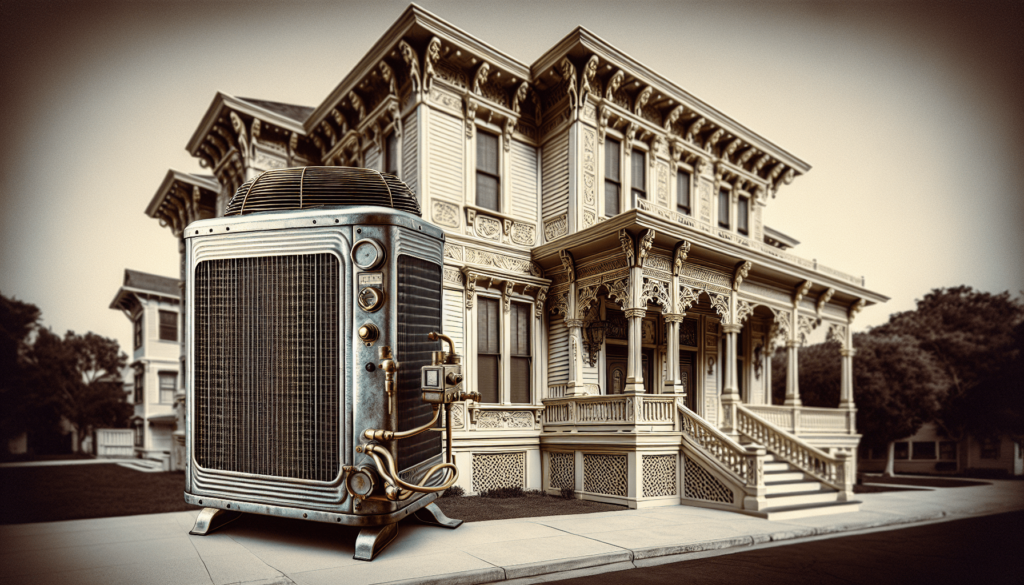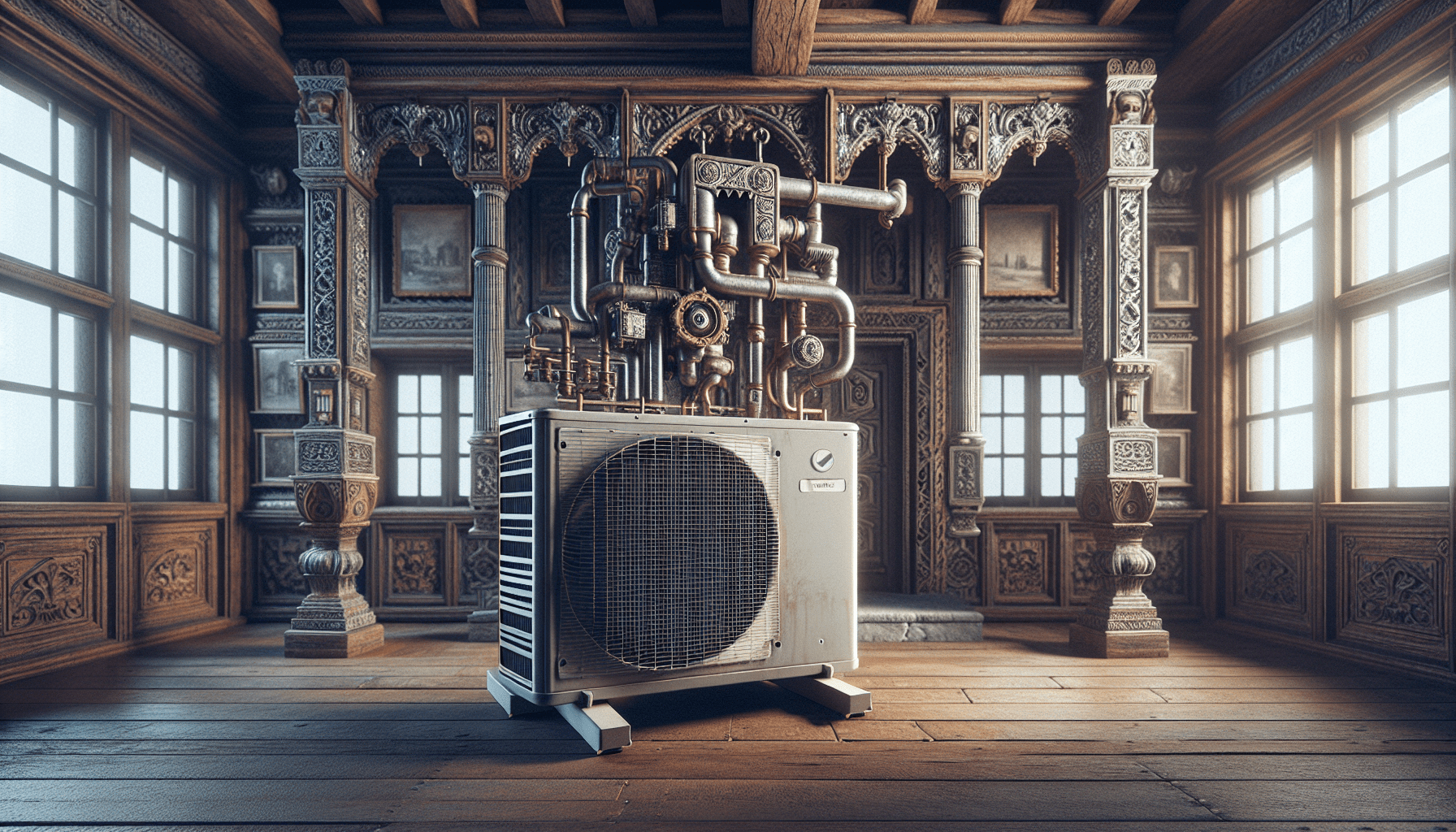“Maintaining the historic charm of your home is crucial in preserving its unique character for years to come. When it comes to A/C maintenance for historical homes, it is essential to follow the best practices to ensure optimal performance while also respecting the integrity of the original design. From regularly changing air filters to scheduling annual tune-ups by a professional HVAC technician, this guide will provide you with all the necessary steps to keep your historical home cool and comfortable without compromising its architectural significance.”
“Maintaining the Historical Charm: A Guide to the Best A/C Maintenance Practices for Historical Homes”
Have you recently purchased a historical home and are looking for ways to maintain its unique charm while also ensuring the efficiency of your air conditioning system? Historical homes come with their own set of challenges when it comes to A/C maintenance, but with the right practices and knowledge, you can keep your home comfortable and cool without compromising its historical integrity. In this guide, we will explore the best A/C maintenance practices for historical homes to help you preserve their charm for years to come.
Understanding the Challenges of A/C Maintenance in Historical Homes
Maintaining the air conditioning system in a historical home can be more complex compared to a modern home due to the age and design of the property. Historical homes often have intricate architectural details, limited insulation, and outdated HVAC systems that require specialized care. Understanding the challenges you may face is the first step towards developing a successful A/C maintenance plan for your historical home.
When maintaining the A/C system in a historical home, it’s crucial to consider the following factors:
- The age and condition of the HVAC equipment
- The layout and size of the home
- The energy efficiency of the property
- The impact of renovations on the historical integrity of the home
By taking these factors into account, you can tailor your A/C maintenance practices to meet the specific needs of your historical home while preserving its charm.
The Importance of Regular A/C Maintenance
Regular maintenance of your air conditioning system is essential for ensuring its longevity and efficiency, especially in a historical home. Neglecting A/C maintenance can lead to costly repairs, decreased energy efficiency, and even damage to your historical property. By implementing a routine maintenance schedule, you can prolong the lifespan of your A/C system and prevent potential issues down the line.

Best A/C Maintenance Practices for Historical Homes
Now that you understand the challenges and importance of A/C maintenance in historical homes, let’s explore the best practices you can follow to keep your air conditioning system running smoothly while maintaining the historical charm of your property.
1. Schedule Annual HVAC Inspections
One of the most important A/C maintenance practices for historical homes is scheduling annual HVAC inspections by a qualified technician. A professional HVAC technician can assess the condition of your air conditioning system, identify any potential issues, and perform necessary repairs or adjustments to ensure optimal performance.
Make sure to schedule your annual HVAC inspection before the start of the cooling season to address any maintenance needs promptly. Additionally, consider hiring a technician with experience working on historical properties to ensure they understand the unique requirements of your home.
2. Change Air Filters Regularly
Changing the air filters in your A/C system regularly is crucial for maintaining good indoor air quality and improving the efficiency of your HVAC system. In historical homes, where dust and debris may accumulate more quickly due to age and design, it’s essential to change the air filters more frequently.
Check your air filters every 1-2 months and replace them as needed to prevent clogging and restrict airflow. This simple maintenance task can help protect your A/C system from damage and extend its lifespan.
3. Seal Air Leaks and Insulate Properly
Historical homes are notorious for drafts and air leaks, which can impact the efficiency of your A/C system and lead to higher energy bills. To maintain the historical charm of your property while improving energy efficiency, consider sealing air leaks and properly insulating your home.
Inspect windows, doors, and other potential air leakage points for gaps or cracks and use weatherstripping or caulking to seal them. Additionally, adding insulation to walls, attics, and basements can help regulate indoor temperatures and reduce the workload on your air conditioning system.
4. Clean and Clear A/C Vents and Ducts
Proper airflow is essential for the efficient operation of your air conditioning system, especially in historical homes with older ductwork and vents. Regularly cleaning and clearing A/C vents and ducts can prevent blockages, improve air quality, and enhance the overall performance of your HVAC system.
Use a vacuum or duster to remove dust, debris, and other obstructions from A/C vents and ducts. Additionally, consider hiring a professional duct cleaning service to thoroughly clean and inspect your ductwork for optimal efficiency.
5. Maintain Outdoor A/C Units
In historical homes, outdoor A/C units may be exposed to more wear and tear due to age, weather conditions, and landscaping. Proper maintenance of outdoor A/C units is essential for ensuring optimal performance and longevity of your air conditioning system.
Regularly inspect the outdoor A/C unit for debris, leaves, and other obstructions that may restrict airflow. Trim vegetation and clear any debris around the unit to allow for adequate ventilation. Additionally, consider covering the outdoor unit during the off-season to protect it from harsh weather conditions.
6. Upgrade to Energy-Efficient A/C Systems
While preserving the historical charm of your property is important, upgrading to a more energy-efficient A/C system can help reduce your energy bills, improve indoor comfort, and minimize your environmental impact. When considering an A/C system upgrade, look for models with high energy efficiency ratings and advanced features that can benefit both your historical home and your wallet.
Consult with an HVAC professional to determine the best energy-efficient A/C system for your historical property, taking into account factors such as size, layout, and insulation. By investing in a modern, energy-efficient A/C system, you can enjoy the benefits of improved comfort and lower operating costs without compromising the historical integrity of your home.

Conclusion
Maintaining the historical charm of your property while ensuring the efficiency of your air conditioning system requires a combination of specialized knowledge, diligent maintenance practices, and professional expertise. By following the best A/C maintenance practices for historical homes outlined in this guide, you can preserve the unique character of your property and enjoy a comfortable living environment for years to come.
Remember to schedule annual HVAC inspections, change air filters regularly, seal air leaks, clean A/C vents and ducts, maintain outdoor A/C units, and consider upgrading to energy-efficient systems. By incorporating these practices into your routine maintenance plan, you can keep your historical home cool and comfortable while honoring its rich heritage.

